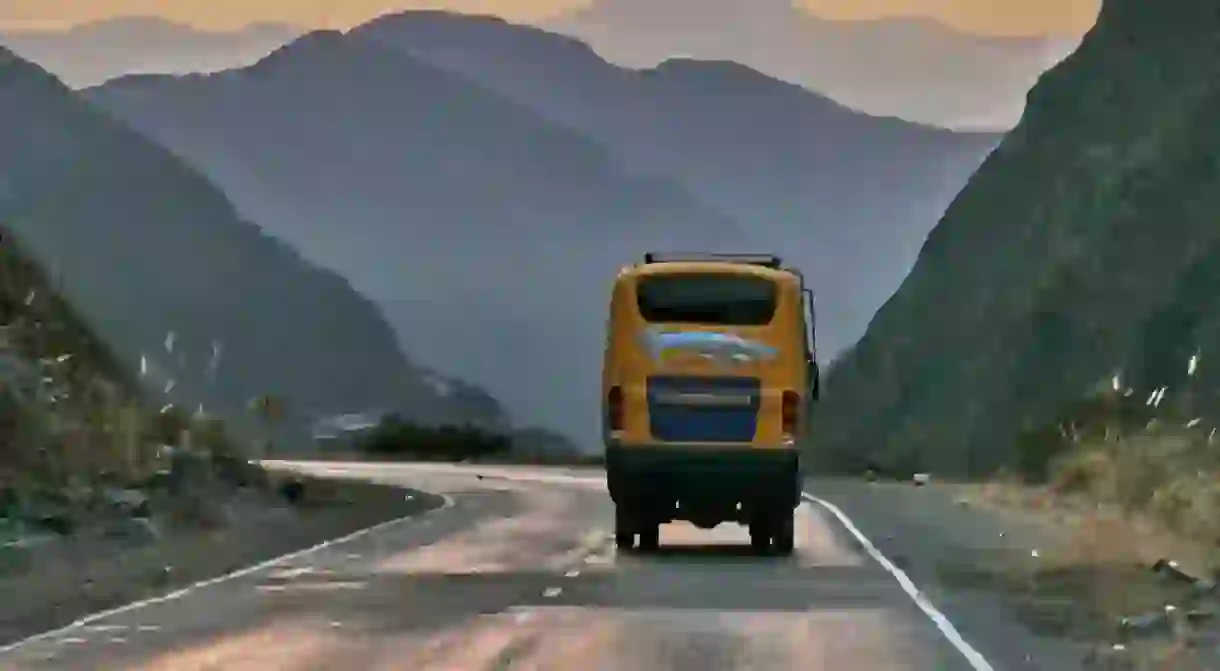The Essential Bus Safety Guide to Bolivia

Of all the potential dangers in Bolivia, it’s fair to say the chaotic transportation system poses the greatest threat to the international traveler. Unfortunately, bus travel is loosely regulated which means unscrupulous companies may compromise on safety to increase their bottom line. Thankfully, there are a few precautions travelers can take to significantly reduce risk.
Choose a seat at the back
This is the most important piece of advice of all, whether in Bolivia or anywhere else in the world. Passengers sitting towards the back of the bus are far more likely to survive a catastrophic collision. Selecting a seat at the time of booking is common in Bolivia, therefore it really makes sense to choose one right at the back. Keep in mind that almost all toilets on Bolivian buses are permanently closed so there is no need to worry about that wafting stench when choosing a seat.

Avoid overnight travel if possible
Laws dictating how many hours a driver can continuously work are either lacking or widely ignored in Bolivia. For this reason, driver fatigue is a serious issue that greatly increases the chance of an accident. Predictably, fatigue tends to hit hardest during the early hours of the morning, so try to pick a departure time that will see you traveling during daylight as much as possible.

Opt for an established company
Bolivia has countless different bus companies to choose from so it’s often difficult to tell which are better and safer. Smaller companies tend to get away with selling cheaper tickets by pushing their drivers to work longer hours or spending less on vehicle maintenance. While safety can obviously never be guaranteed, better known Bolivian bus companies include Bolivar, Trans Copacabana, El Dorado and Todo Turismo.

Make sure the driver isn’t drunk
We shouldn’t really have to say this, but unfortunately some Bolivian drivers do like to wet the whistle before getting behind the wheel. This is mostly prevalent during holidays and festivals, although it could happen at any time of year. Check out your driver to ensure he seems steady on his feet. If you do suspect he is drunk, get off straight away and find alternative transportation.

Don’t be afraid to call out macho drivers
Some drivers like to put a little more pressure on the peddle than most passengers feel comfortable with. This is usually either in a deluded attempt to express masculinity or the desire to complete more trips in a day to maximize earnings. Either way, as a passenger you are will within your rights to insist the driver travels at a reasonable speed. Don’t be afraid to yell ‘no corres maestro!’ (stop speeding, driver) as many times as necessary. Chances are a bunch of equally frightened Bolivian passengers will start yelling at him too.

Always have travel insurance
Although Bolivian healthcare is quite cheap, the best hospitals may refuse to offer treatment if they suspect a patient is unable to pay. The easiest way to avoid such situations is to have comprehensive travel insurance, preferably with an emergency information card that is kept on your person at all times.

Bring some warm clothes
It’s normal for nighttime temperatures to plummet well below freezing in Bolivia’s harsh altiplano (highland plains). Most Bolivian buses don’t have heating and blankets are rarely provided, so it’s of utmost importance to bring enough warm clothes for those lengthy, overnight trips.

Book a flight instead
If the budget allows, taking a flight is a great way to travel in Bolivia and is remarkably safe. Air travel enables passengers to arrive at their destination in a fraction of the time and soar over the ever-so-common Bolivian protests and blockades. Fares are very reasonable too, with tickets between major cities often costing less than 350 BOB (US$50) one way.














